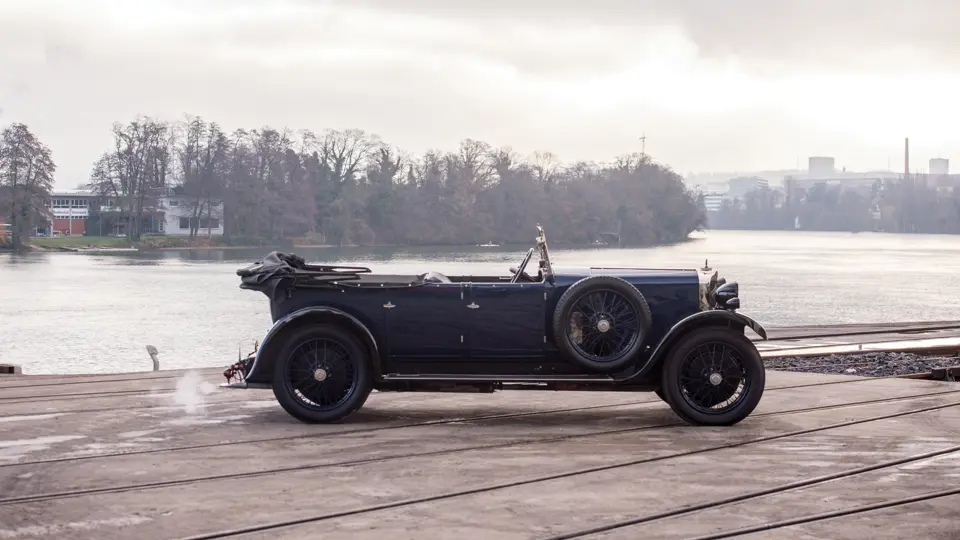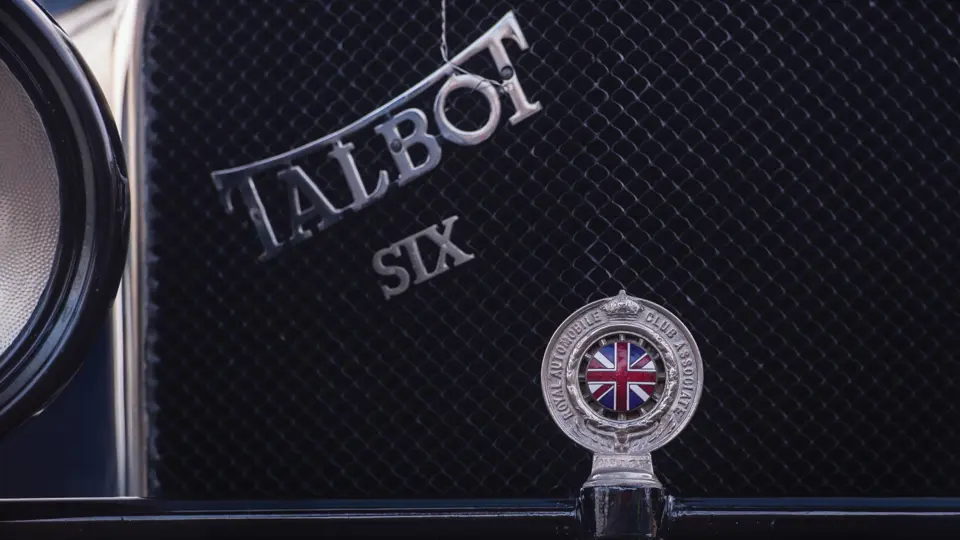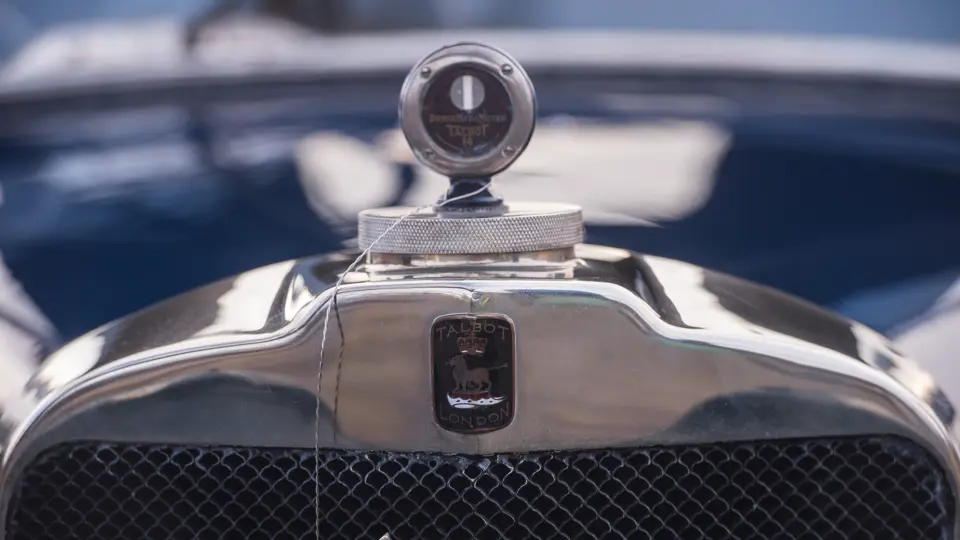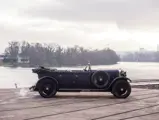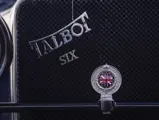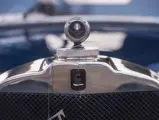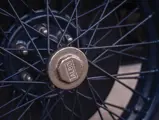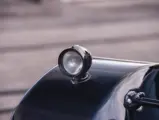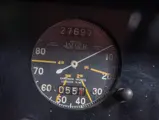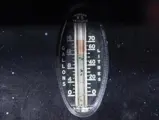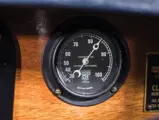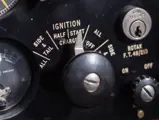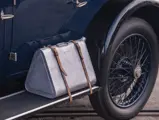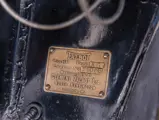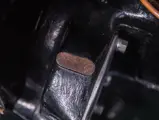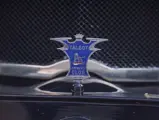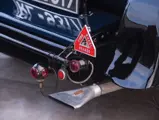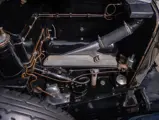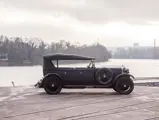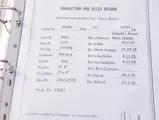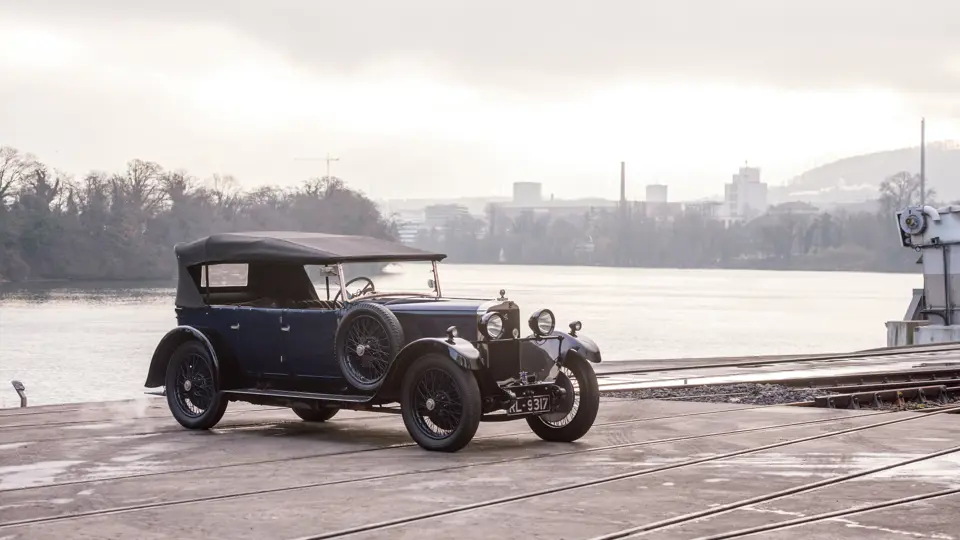
1929 Talbot Type AG 14/45 HP Five-Seater Tourer by Darracq
{{lr.item.text}}
€44,800 EUR | Sold
{{bidding.lot.reserveStatusFormatted}}
- Early Roesch-designed tourer
- Exciting and fun to drive
- Older, well-preserved restoration
- Un des premiers modèles conçus par Roesch
- Passionnante et amusante à conduire
- Ancienne restauration de qualité
46 bhp, 1,666 cc OHV inline six-cylinder engine, four-speed manual transmission, solid front axle with semi-elliptical leaf springs, live rear axle with quarter-elliptical leaf springs, and four-wheel mechanical drum brakes. Wheelbase: 2,819 mm
Moteur six cylindres en ligne à soupapes en tête, 1 666 cm3, 46 ch, boîte manuelle à quatre vitesses, essieu avant rigide à ressorts semi-elliptiques, pont arrière oscillant à ressorts quart-elliptiques, quatre freins à tambour à commande mécanique. Empattement : 2 819 mm
In 1916, Georges Henri Roesch became chief engineer of Clement Talbot, Ltd., of London, originally an importer of French Clément-Bayard automobiles but builder of British Talbot cars from 1906. Born in Switzerland, Roesch came with experience from Grégoire, Delaunay Belleville, Renault, and Daimler. He set about designing a new range of cars for the post–Great War era, but this only came to fruition after the formation of the Sunbeam-Talbot-Darracq combine in 1920. His brilliant 14/45 model, a light six-cylinder car with a high-revving engine, came just at the right time, for S-T-D Motors, Ltd. was in dire straits. It proved very popular and was built from 1926–1932.
The Sunbeam Talbot Darracq Register records that this 14/45 Tourer, chassis number 25065, was originally sold to Maude’s Motor Mart of Exeter, UK. It was ordered on 19 February 1929, invoiced the next day and delivered the following week on 27 February. In previous ownership, it was restored over an extended period from the 1970s until 1996. Its original registration, RL 9317, a 1929 Cornwall issue, remains with the car.
Bearing five-seat open coachwork from Darracq Motor Engineering Co., which had been Alexandre Darracq’s aeronautical company during the Great War, this car is the quintessential British tourer. Harmoniously finished in deep blue with black wings and a black hood and tonneau cover, it has restrained nickel brightwork. Notable period features are direction signals atop the rear number plate, a fishtail exhaust, and leather-gaitered springs.
Having seen regular upkeep and only moderate use since restoration, it stands ready to be enjoyed by a new owner.
En 1916, Georges Henri Roesch devint ingénieur en chef de Clement, Talbot Ltd. de Londres, à l’origine importateur des automobiles Clément Bayard et constructeur des voitures British Talbot à partir de 1906. Né en Suisse, Roesch avait acquis son expérience chez Grégoire, Delaunay-Belleville, Renault et Daimler. Il commença à étudier une nouvelle gamme de voitures pour l’après-guerre, mais celles-ci n’apparurent qu’après la fondation du groupe Sunbeam-Talbot-Darracq en 1920. Son magnifique modèle 14/45, une six-cylindres légère dont le moteur pouvait tourner à haut régime, fut prêt juste à temps car S-T-D Motors Ltd se trouvait en grandes difficultés. Ce modèle à succès fut produit de 1926 à 1932.
Le Registre Sunbeam Talbot Darracq confirme que ce tourer 14/45 châssis n° 25065 fut vendu à l’origine à Maude’s Motor Mart d’Exeter (Royaume-Uni). Commandé le 19 février 1929, il fut facturé le lendemain et livré la semaine suivante, le 27 février. Aux mains de son précédent propriétaire, il fut restauré sur une longue période allant des années 1970 à 1996. Cette voiture porte toujours son numéro RL 9317, émis dans les Cornouailles en 1929.
Habillée d’une carrosserie cinq places construite chez Darracq Motor Engineering Co, ancienne firme d’aéronautique fondée par Alexandre Darracq pendant la Grande Guerre, cette voiture est l’archétype du tourer ou torpédo anglais. Peinte en bleu intense avec ailes noires et capote et couvre-tonneau noirs, elle porte peu d’ornements nickelés. Parmi les équipements typiques de l’époque, on notera l’indicateur de direction monté sur la plaque d’immatriculation arrière, un échappement en queue de poisson et des gaines de ressorts arrière en cuir.
Régulièrement entretenue et modérément utilisée depuis sa restauration, elle n’attend plus qu’un nouveau propriétaire qui saura l’apprécier.
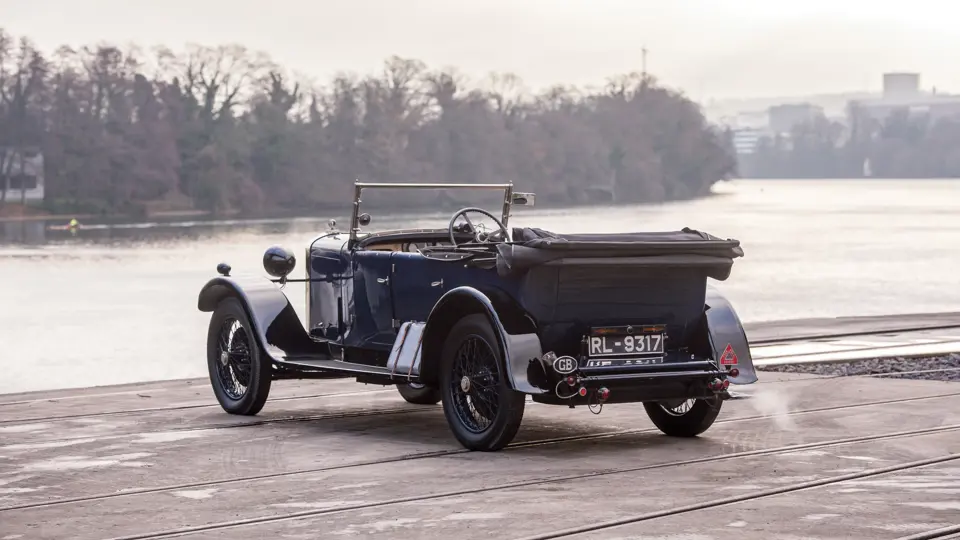

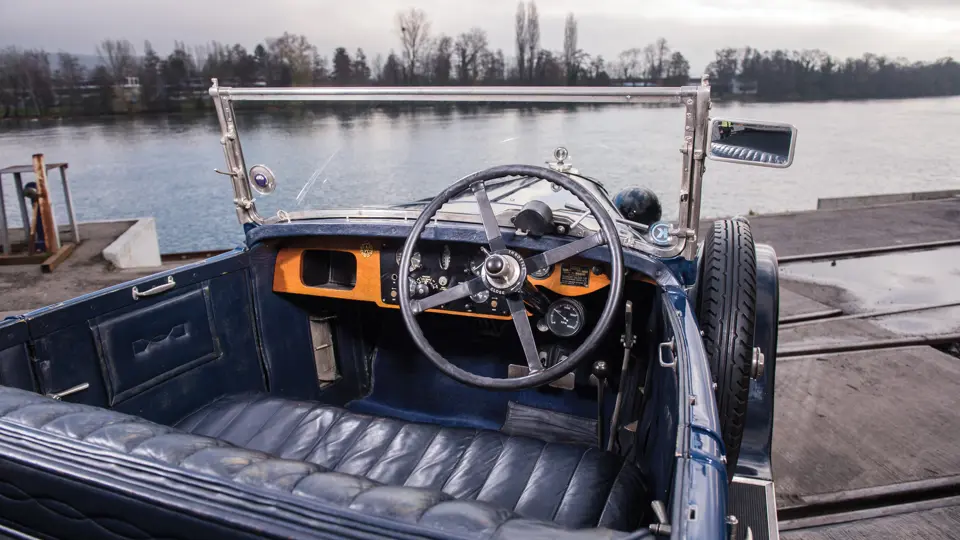

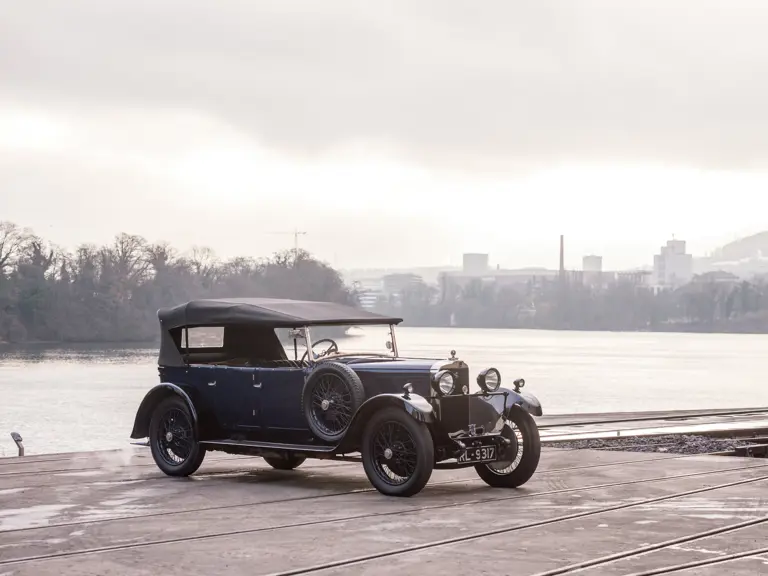
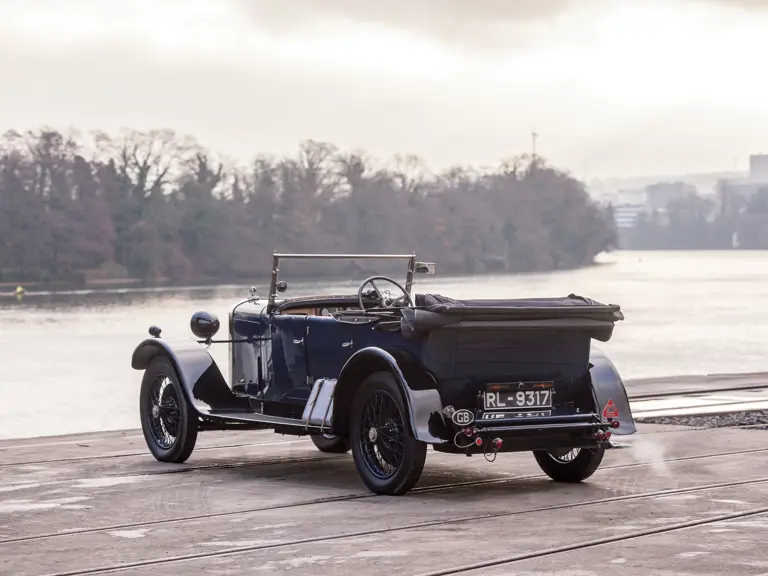
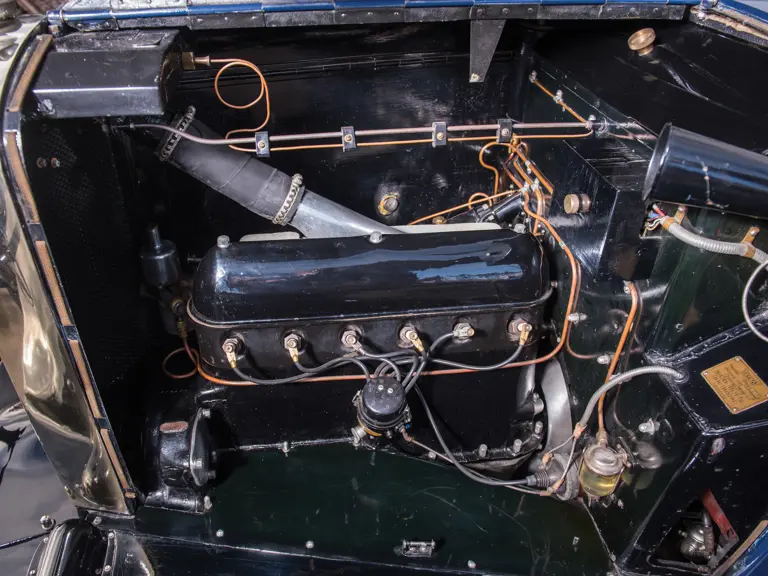


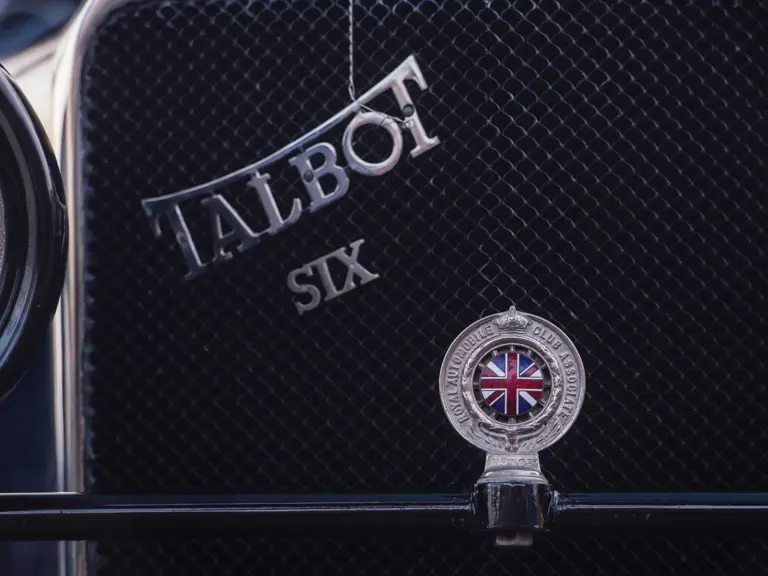
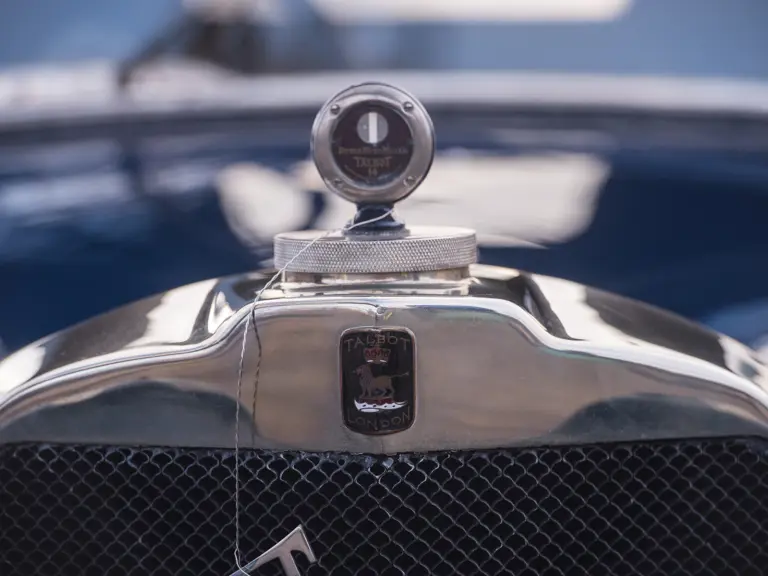


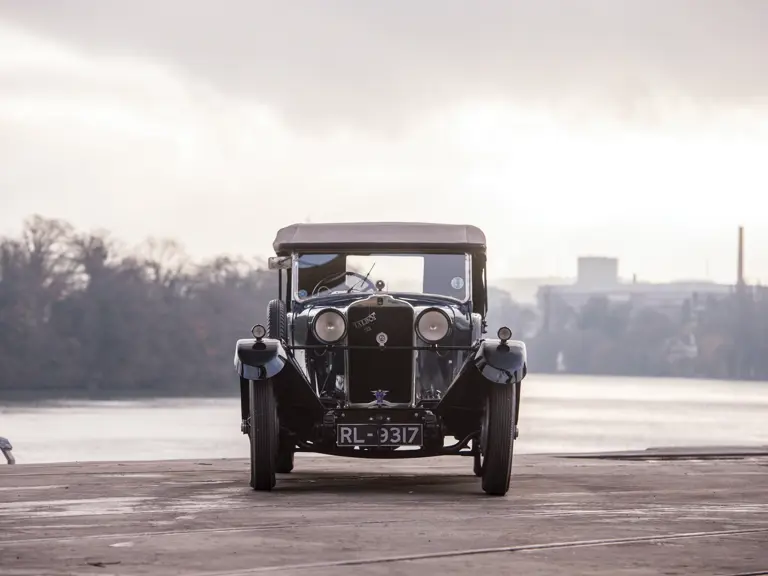
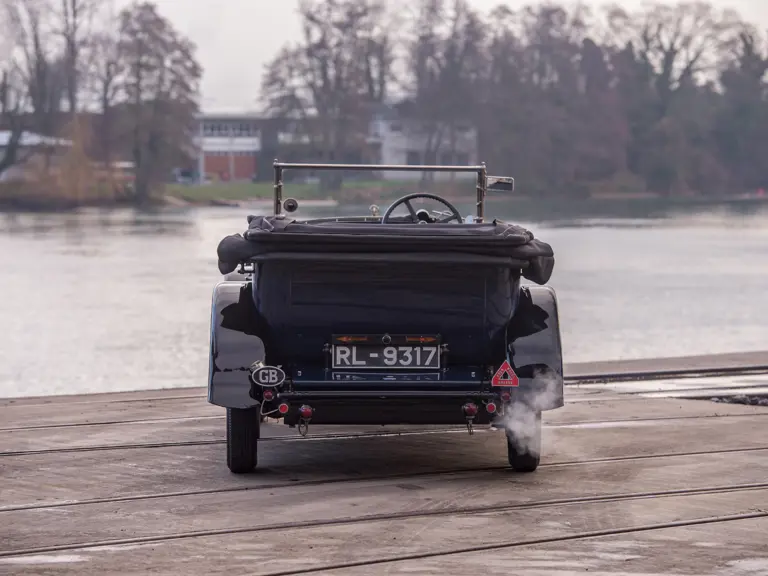
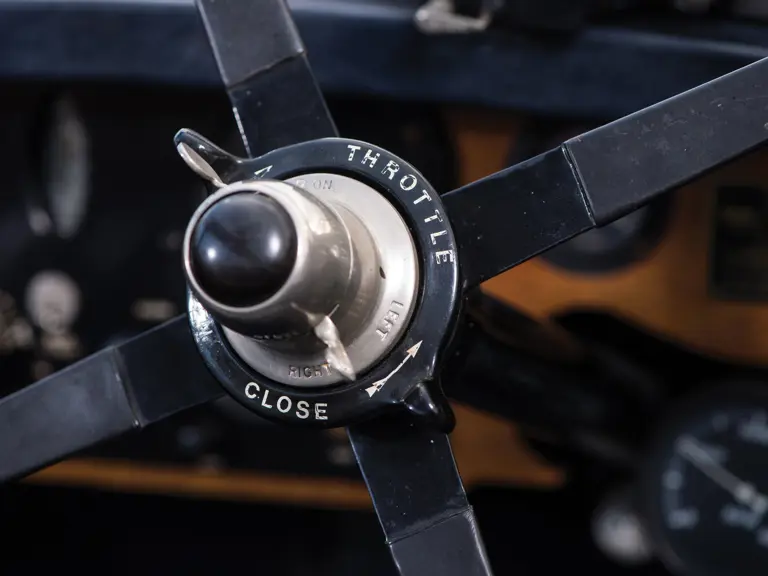
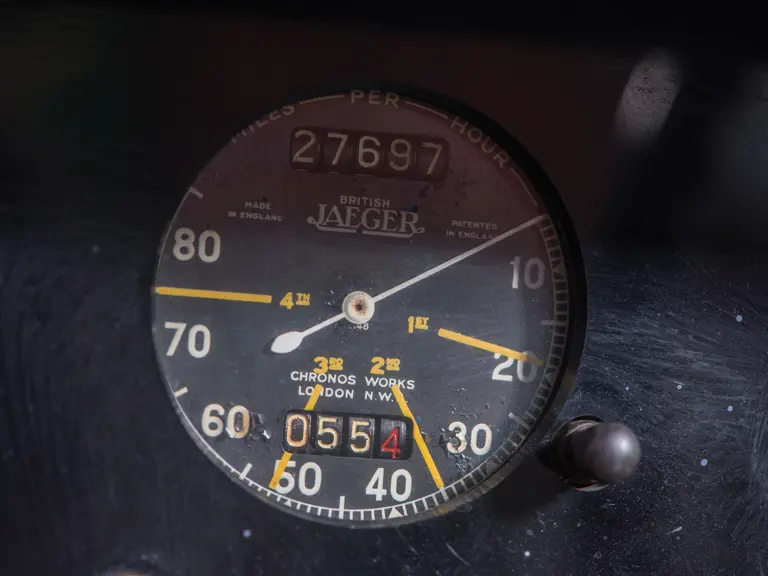
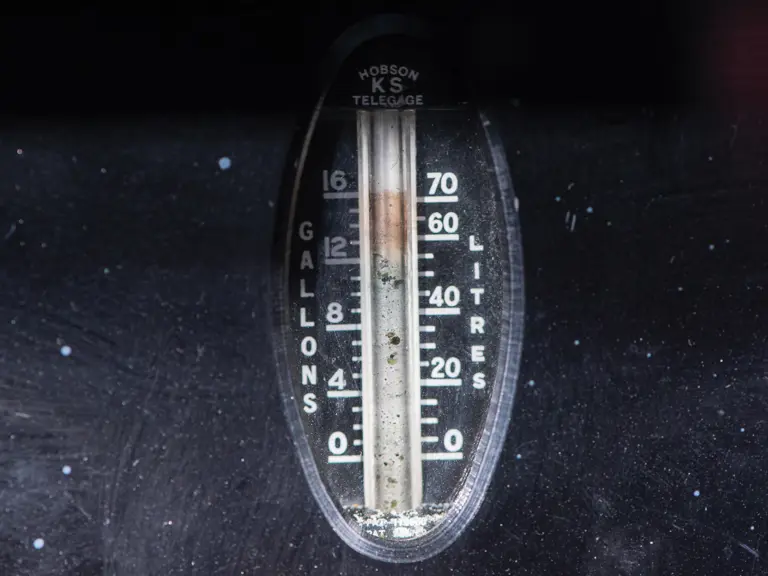
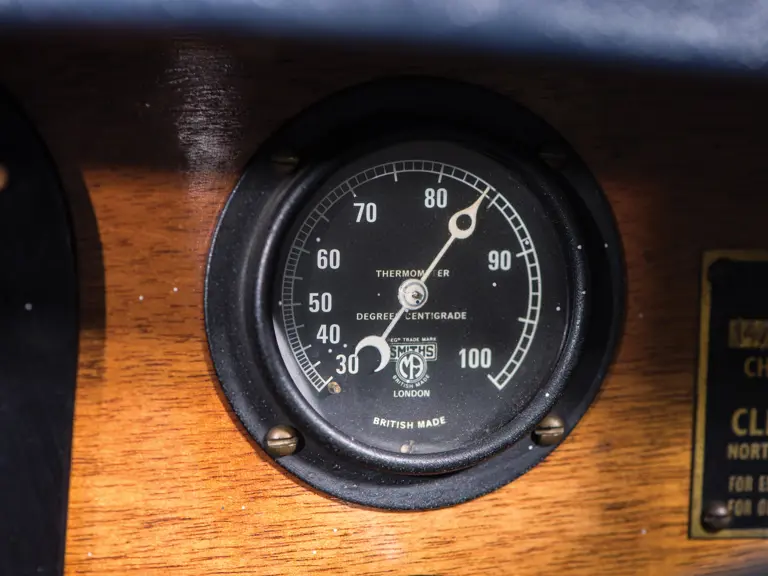
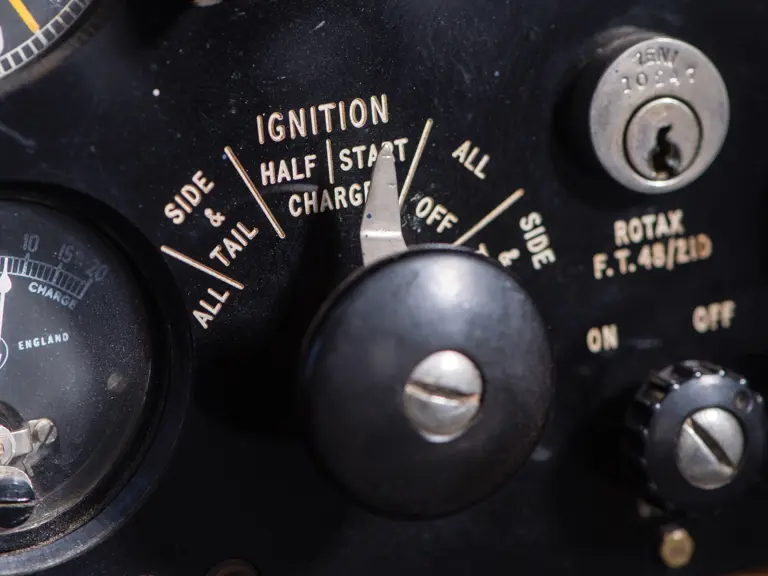
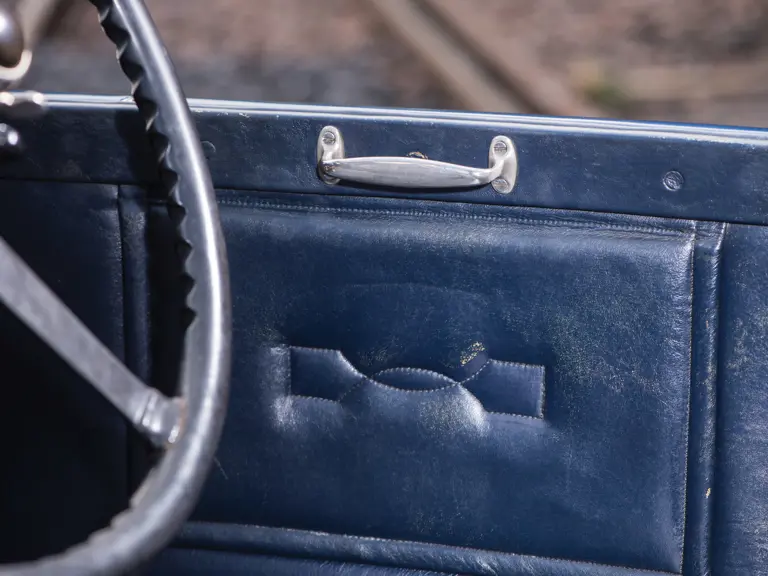
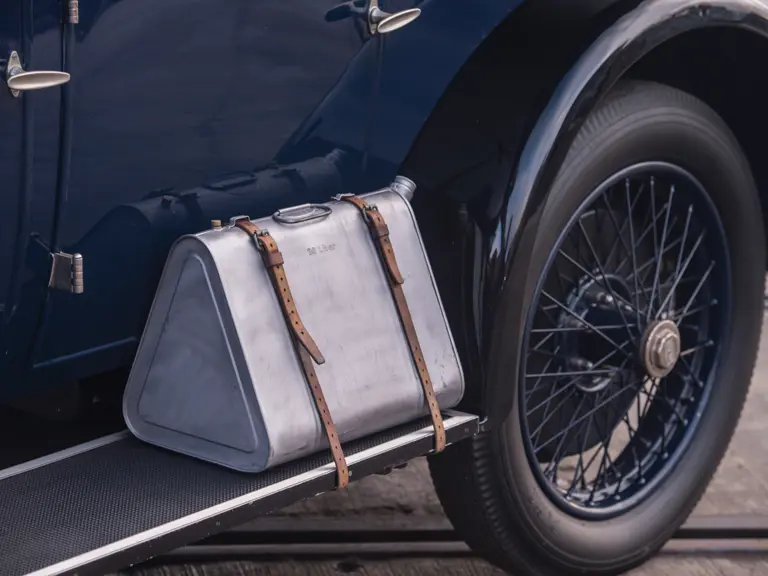
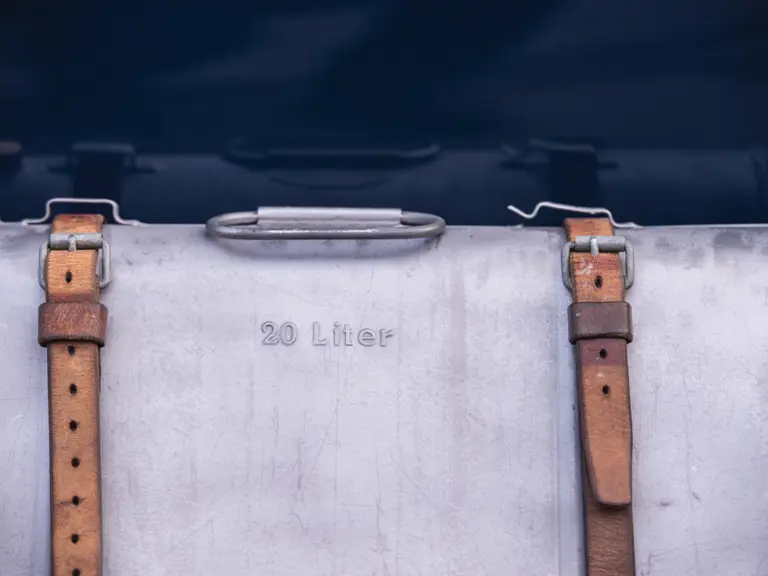
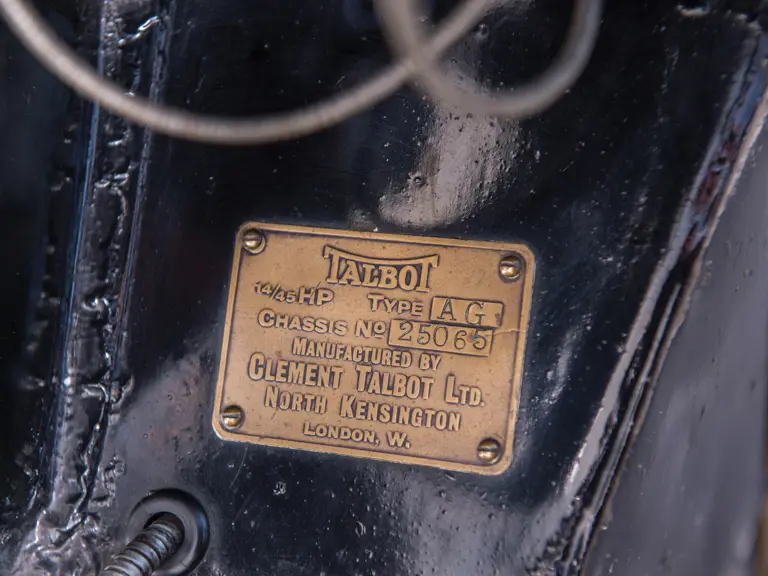

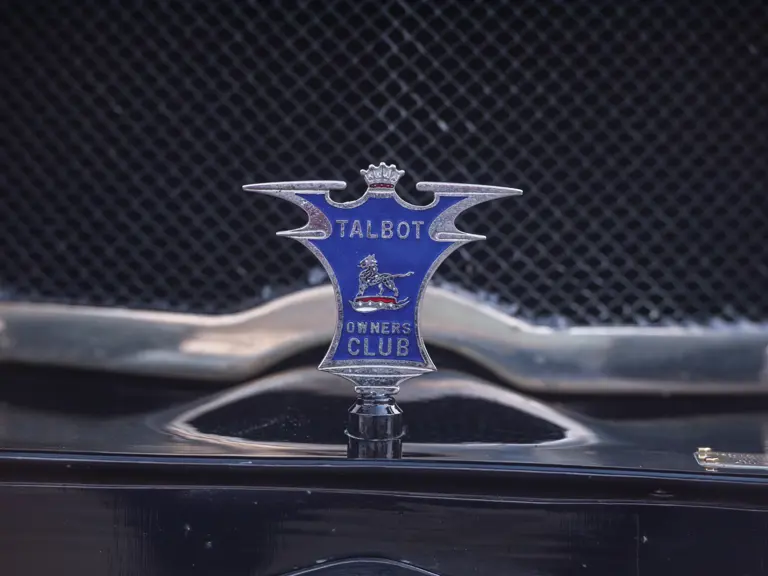

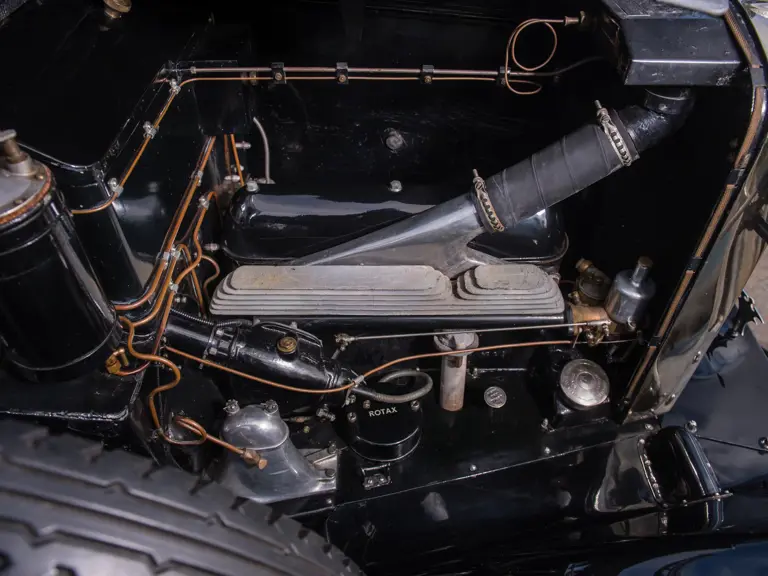
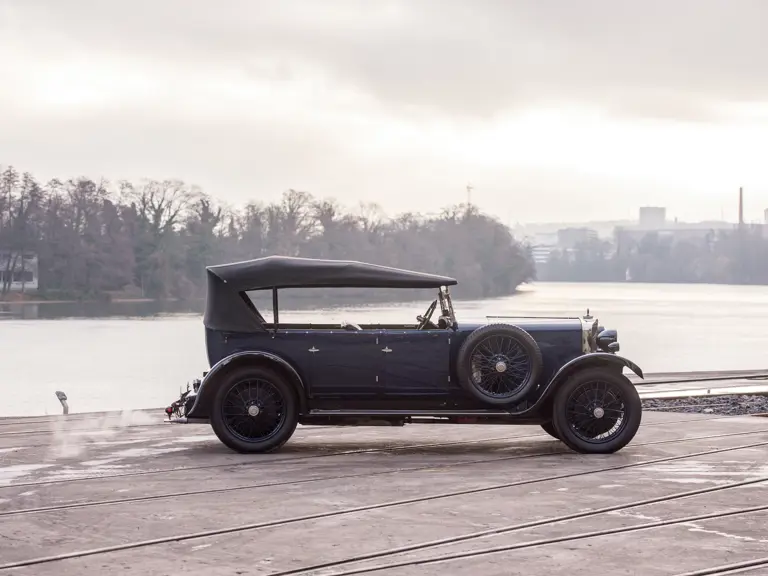
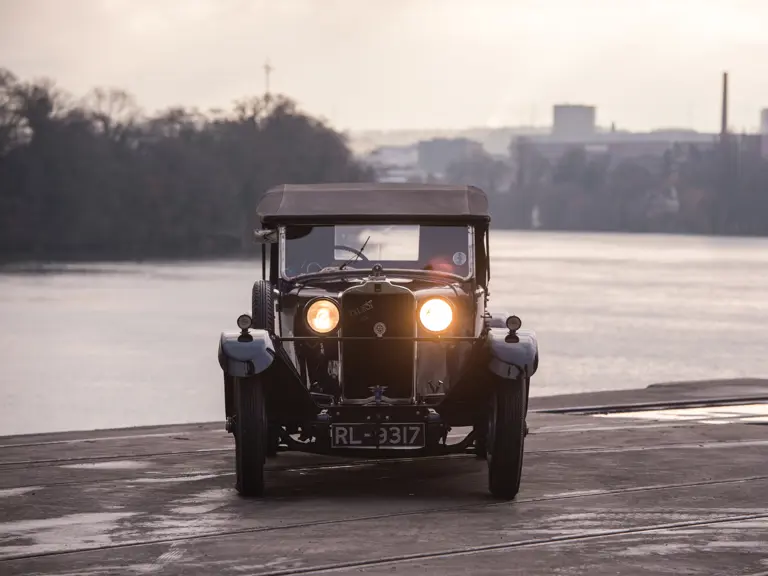

 | Paris, France
| Paris, France
